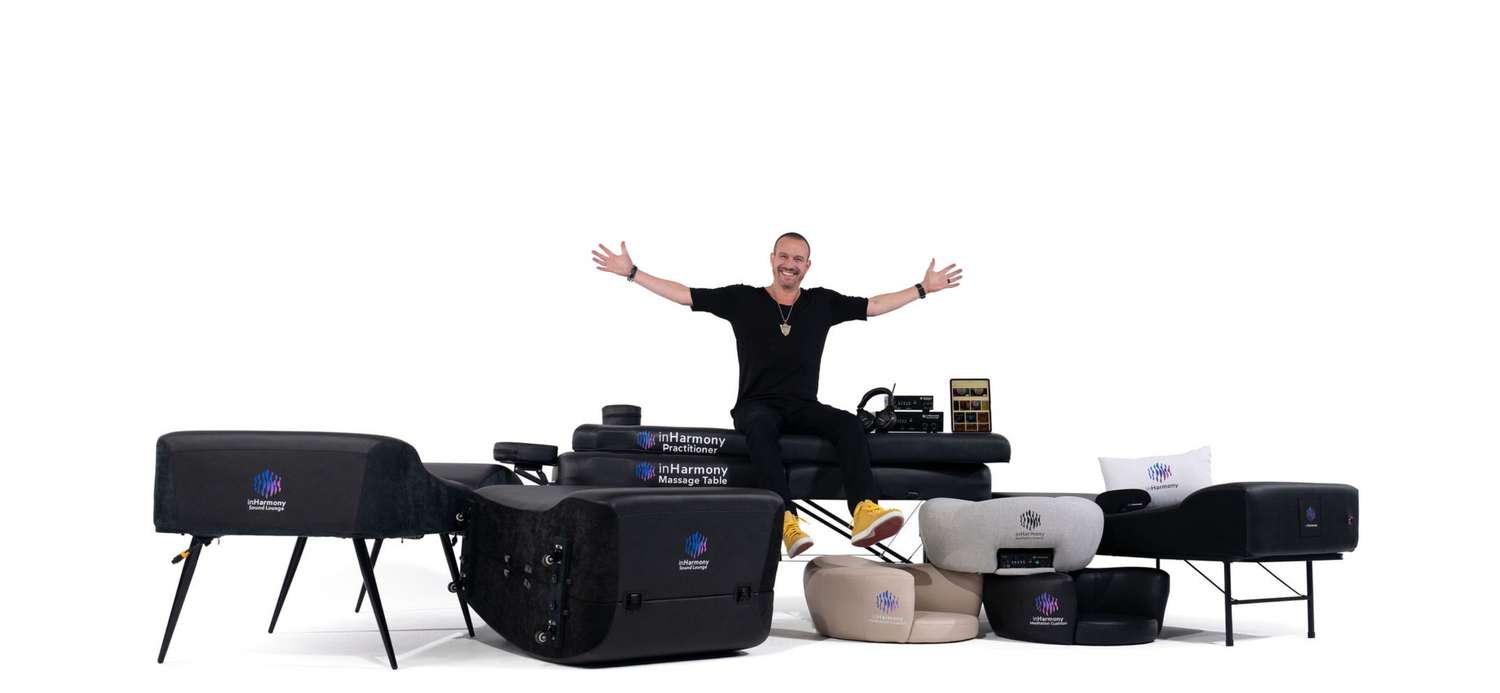1. Vibroacoustic Therapy
(Imagine someone using any of inharmony’s products)
Vibroacoustic therapy is a type of sound therapy that uses low-frequency vibrations to massage your cells and organs from within. It can help you relax, reduce pain, improve circulation, and enhance your well-being.
This therapy was developed in Norway by Olav Skille in the 1980s. He discovered that certain frequencies of sound waves could have beneficial effects on the body and mind.
He designed special devices with embedded speakers that could deliver these vibrations to the body through a bed, a chair, a mat, or a pillow. The vibrations are usually accompanied by soothing music that matches the frequencies of the vibrations.
How Does Vibroacoustic Therapy Work?
Vibroacoustic therapy works by stimulating the nervous system and the brain with low-frequency sound waves. These sound waves are below the range of human hearing, but they can be felt by the body as gentle pulsations.
The vibrations can penetrate deep into the tissues and organs, creating a resonance effect that harmonizes the cells and promotes healing.
One of the proposed mechanisms of action for vibroacoustic therapy is brainwave entrainment. This means that the brainwaves synchronize with the rhythms of the sound waves, creating different states of consciousness. For example, 40 Hz vibrations can induce a state of alertness and focus, while 10 Hz vibrations can induce a state of relaxation and meditation.
To learn more about the benefits of this therapy, read our comprehensive guide on vibroacoustic therapy.
How to Experience Vibroacoustic Therapy?
Vibroacoustic therapy is available at some spas, resorts, clinics, and wellness centers around the world. You can also purchase your vibroacoustic device online such as meditation cushions, sound lounges, and sound practitioners, or make your DIY platform with transducers and speakers.
To experience these vibrotactile sensations, you simply lie down or sit on the device, put on some headphones or speakers, and listen to the music and vibrations for 15 to 60 minutes. You can choose from different frequencies and programs depending on your needs and preferences.
2. Music Therapy
Music therapy is one of the most widely recognized and researched forms of sound therapy. It involves using music to address various health and wellness issues, such as stress, anxiety, depression, pain, memory loss, autism, dementia, and more.
This type of sound therapy can be done individually or in groups, with a trained music therapist, or on your own. Music therapy can involve listening to music, playing instruments, singing, composing, improvising, or moving to music.
How Does Music Therapy Work?
Music therapy works by stimulating the brain and the body with musical sound waves. Music can affect different parts of the brain, such as the cerebellum, the frontal lobes, and the temporal lobes, which are involved in processing rhythm, emotion, and pitch. Music can also activate the reward center of the brain, which can produce feelings of pleasure and motivation.
Music therapy can help people express themselves, explore their emotions, cope with stress, enhance their memory, improve their mood, and promote relaxation.



